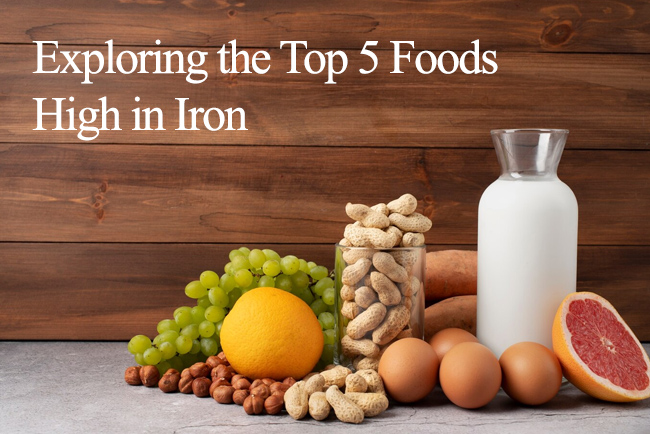What Is Iron?
Iron is an essential nutrient vital for various bodily functions. It plays a crucial role in the production of hemoglobin, the molecule responsible for transporting oxygen in red blood cells. Additionally, iron is involved in energy production, DNA synthesis, hormone synthesis, enzyme function, and immune system support.
Top Iron-Rich Foods
- Red Meat: Beef, lamb, and chicken liver are excellent sources of heme iron, the most absorbable form of iron.
- Shellfish: Oysters and mussels are rich in heme iron, providing significant amounts of this essential nutrient.
- Molasses: Blackstrap molasses, a byproduct of sugar cane processing, contains a considerable amount of iron and is known for its high bioavailability.
- Legumes: Various legumes such as beans, soybeans, lentils, kidney beans, and chickpeas are good plant-based sources of iron, although they contain non-heme iron, which is less readily absorbed.
- Green Leafy Vegetables: Spinach, Swiss chard, beet greens, dandelion greens, and kale are nutrient-rich vegetables that offer iron, albeit in the non-heme form.
Types of Iron
Dietary iron exists in two forms: heme iron and non-heme iron. Heme iron, found in animal products, is more efficiently absorbed by the body compared to non-heme iron found in plant-based foods and supplements.
Iron Deficiency
Iron deficiency is a prevalent nutritional deficiency globally, particularly among women of childbearing age, pregnant women, infants, older adults, vegetarians, and individuals with certain medical conditions. Symptoms of iron deficiency range from fatigue and decreased cognitive function to anemia, which can have serious health consequences if left untreated.
Other Natural Sources of Iron
Aside from dietary sources, iron supplementation may be necessary for individuals with low iron levels. Gentle forms of iron supplements, such as ferric pyrophosphate and ferrous bis-glycinate, are recommended to minimize gastrointestinal side effects. Cooking with cast iron pans, consuming vitamin C-rich foods to enhance iron absorption, and managing the intake of minerals like calcium, magnesium, and zinc can also support iron levels.
Summary Table of Iron-Rich Foods
| Food | Iron Content (per serving) | Type of Iron |
|---|---|---|
| Red Meat | 4-8 mg | Heme |
| Shellfish | 6-7 mg | Heme |
| Molasses | 2.3 mg (per tablespoon) | Non-heme |
| Legumes | 2-4 mg | Non-heme |
| Green Leafy Vegetables | 3 mg | Non-heme |
FAQ
1. How much iron do I need daily?
The Recommended Dietary Allowance (RDA) for iron is 18 mg for women (27 mg during pregnancy) and 8 mg for men.
2. What are the symptoms of iron deficiency?
Symptoms of iron deficiency include fatigue, weakness, pale skin, cold hands and feet, shortness of breath, brittle nails, and decreased cognitive function.
3. Are there any side effects of iron supplementation?
Common side effects of iron supplements include stomach irritation, constipation, diarrhea, nausea, and abdominal discomfort. Choosing gentle forms of iron can help minimize these side effects.
4. Can I get enough iron from a vegetarian diet?
Yes, it is possible to obtain sufficient iron from a vegetarian diet by incorporating iron-rich plant foods such as legumes, leafy greens, tofu, nuts, seeds, and fortified cereals.
5. How can I enhance iron absorption?
Consuming vitamin C-rich foods alongside iron-rich meals or supplements can enhance non-heme iron absorption. Avoiding coffee, tea, and calcium, magnesium, and zinc supplements around iron-rich meals can also improve absorption.
6. Who is at risk of iron deficiency?
Individuals at higher risk of iron deficiency include women of childbearing age, pregnant women, infants, vegetarians, vegans, and individuals with certain medical conditions such as gastrointestinal disorders.
7. Should I take an iron supplement?
Iron supplementation should be considered if you have low iron levels confirmed through blood tests. Consult with a healthcare professional before starting any supplementation regimen.

